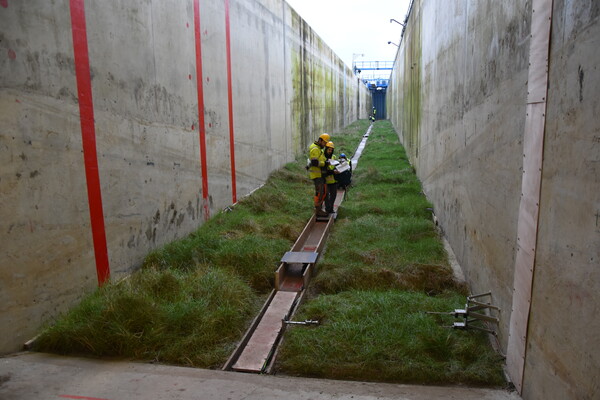A. Antonini1, D. Dermentzoglou1, J. Muller2, M. Tissier1, M. Klein Breteler3, P. Willemsen3, V. Mason4, T. Bouma4, A. Vouziouris1, P. Buring5, B. Hofland1, B. Borsje2
1 Delft University of Technology, the Netherlands; 2 University of Twente, the Netherlands; 3 Deltares, the Netherlands; 4 NIOZ, the Netherlands; 5 Wetterskyp Fryslan, the Netherlands.
* Corresponding author: a.antonini@tudelft.nl
Introduction
Coastal areas worldwide rely on hard engineering structures for flood protection, but concerns over their static nature and long-term efficacy under climate change have prompted interest in nature-based solutions. Salt marshes, known for their wave attenuation properties, have been proposed as sustainable alternatives. Although their role in coastal defence has been acknowledged, a lack of quantitative data on their performance under extreme hydrodynamic conditions has limited their integration into flood protection frameworks. Previous research has focused primarily on mild wave conditions, leaving a gap in understanding their resilience during storms. This study presents a large-scale experiment aimed at assessing the response and survivability of salt marshes when exposed to extreme hydrodynamic loads. The results will contribute to the development of risk-based coastal defence strategies that incorporate natural elements.
Objective and Methods
This study aimed to quantitatively evaluate wave attenuation and the morphodynamic response of salt marshes under storm-like conditions. A month-long experimental campaign was conducted in the Delta Flume at Deltares, featuring a 71-meter-long salt marsh model built from vegetated clay blocks. These blocks were harvested from a real salt marsh in the Peazemerlannen Nature Reserve, Netherlands, ensuring realistic soil composition and vegetation characteristics. A range of wave conditions (HS between 0.8–2.0 m) was tested under varying water depths (4.4–6.9 m) and offshore wave steepness (sop between 2.8–5%). Measurements included water surface elevation, velocity profiles, pore pressure, wave loading on a dike, and biomass degradation.
Additionally, the study focused on morphological changes such as sediment erosion, vertical deformation of the marsh platform, and cliff retreat at the seaward edge. The experiment was structured into three vegetation conditions, healthy, intermediate, and degraded, to assess the progressive effects of the vegetation on the hydrodynamic forcing. Data collection methods included wave gauges, pressure sensors, accelerometers, and laser scanning for erosion and topographic assessment.
Results
The study provides the first large-scale quantitative insights into salt marsh performance under extreme wave conditions. Initial findings focus on wave attenuation capacity, sediment erosion patterns, and vegetation resilience. Results indicate that wave attenuation increases for lower wave heights when vegetation quality is high, demonstrating the effectiveness of well-developed salt marshes in dissipating wave energy under moderate conditions. However, under extreme wave conditions, the attenuation effect of the vegetation remains nearly the same regardless of vegetation quality, suggesting that storm waves largely overpower the influence of vegetation structure.
These findings provide critical insights into the role of salt marshes in coastal protection, highlighting their potential effectiveness under normal conditions but also their limitations during extreme events. This study offers a valuable dataset for improving the integration of nature-based solutions into coastal flood risk management and informs future designs that balance ecological function with engineering reliability.

Morning activities along a vegetated Delta flume










